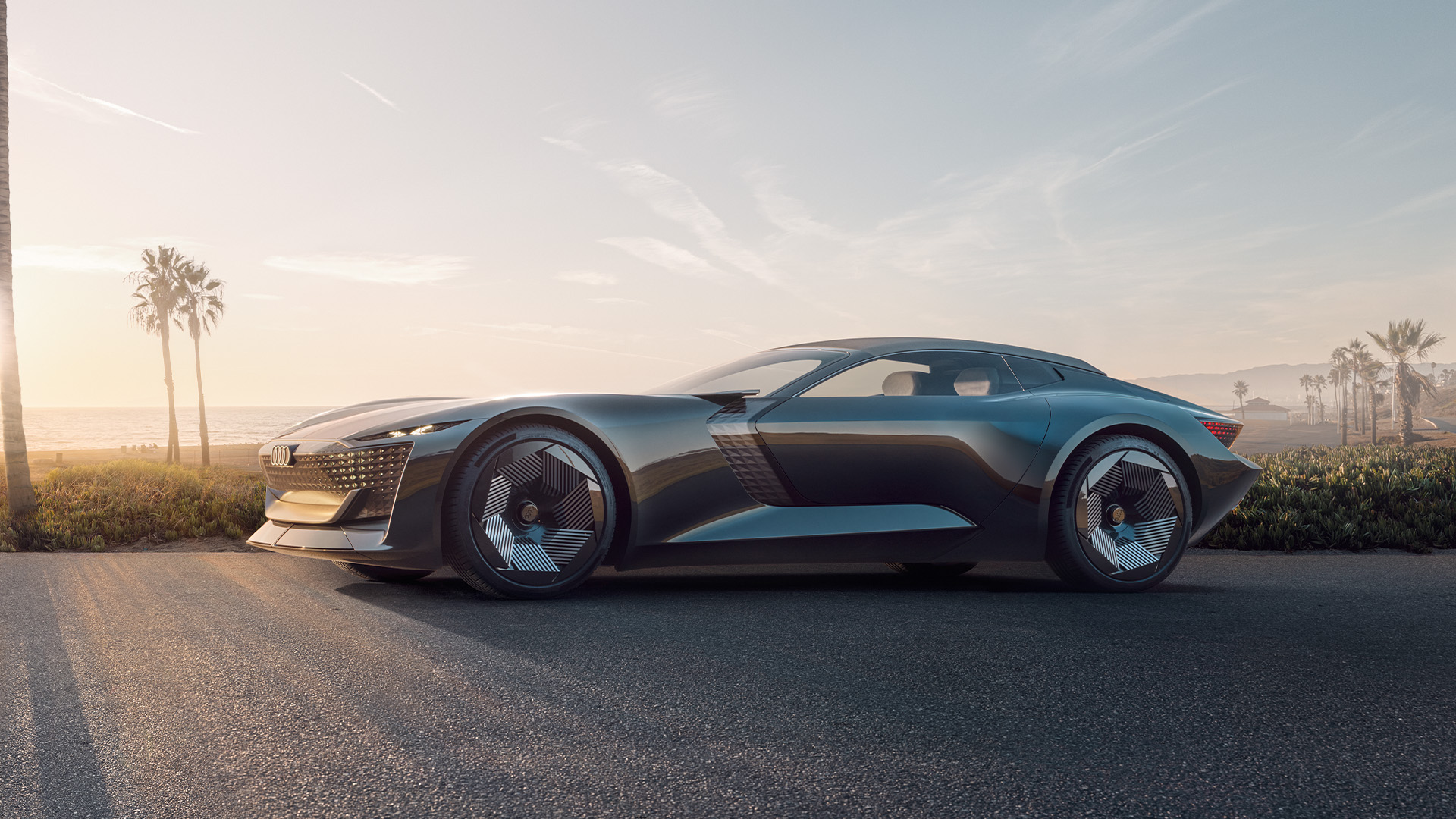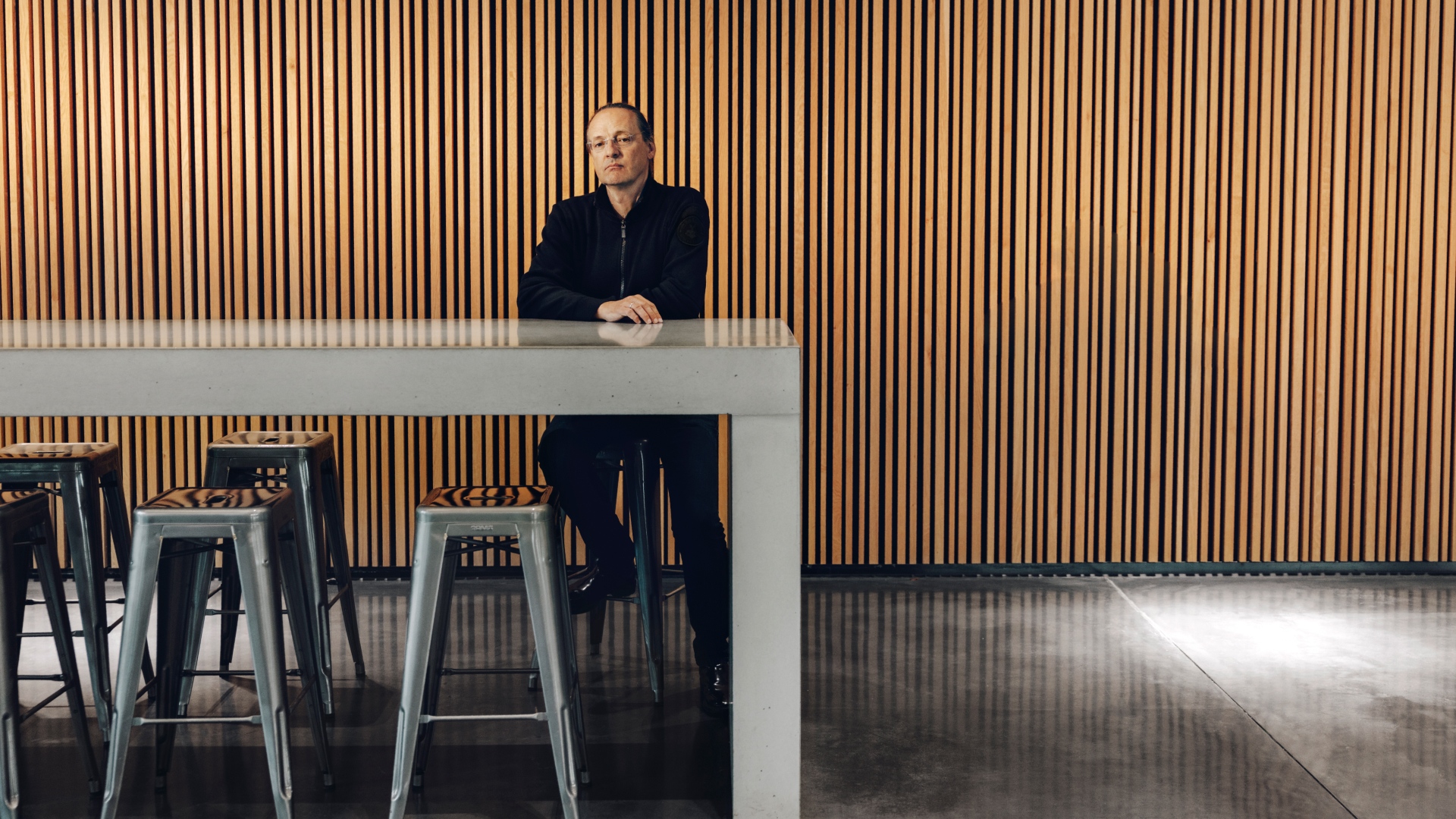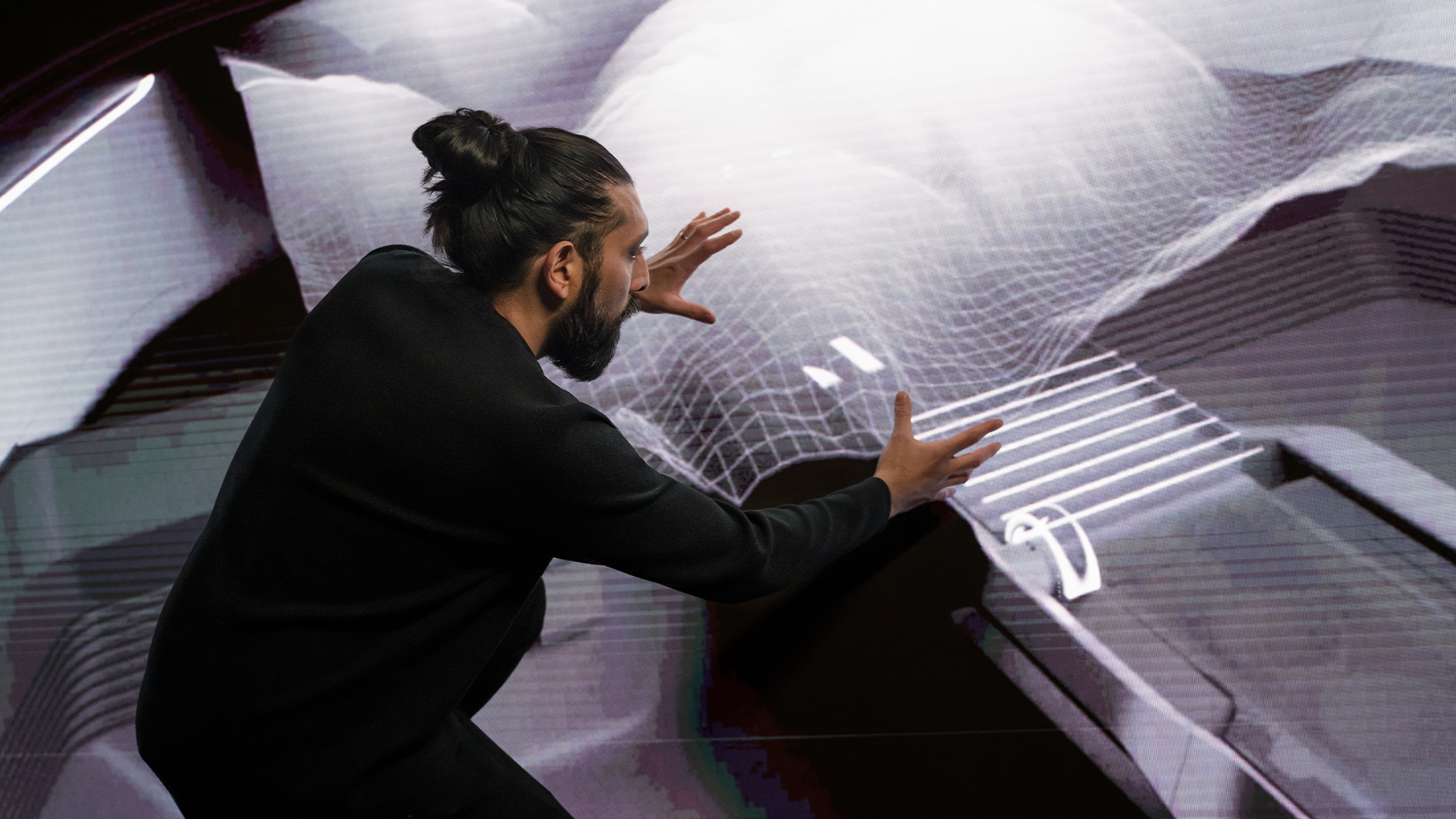Take a deep dive into a fascinating vision of the future – shaped by Audi.
“Digital promotes human-centric design”
Gael Buzyn, Senior Director of the Audi Design Loft in Malibu, has designed the new Audi skysphere concept virtually. What does this upheaval mean for a designer?
The vehicle shown is a concept vehicle that is not available as a production vehicle.
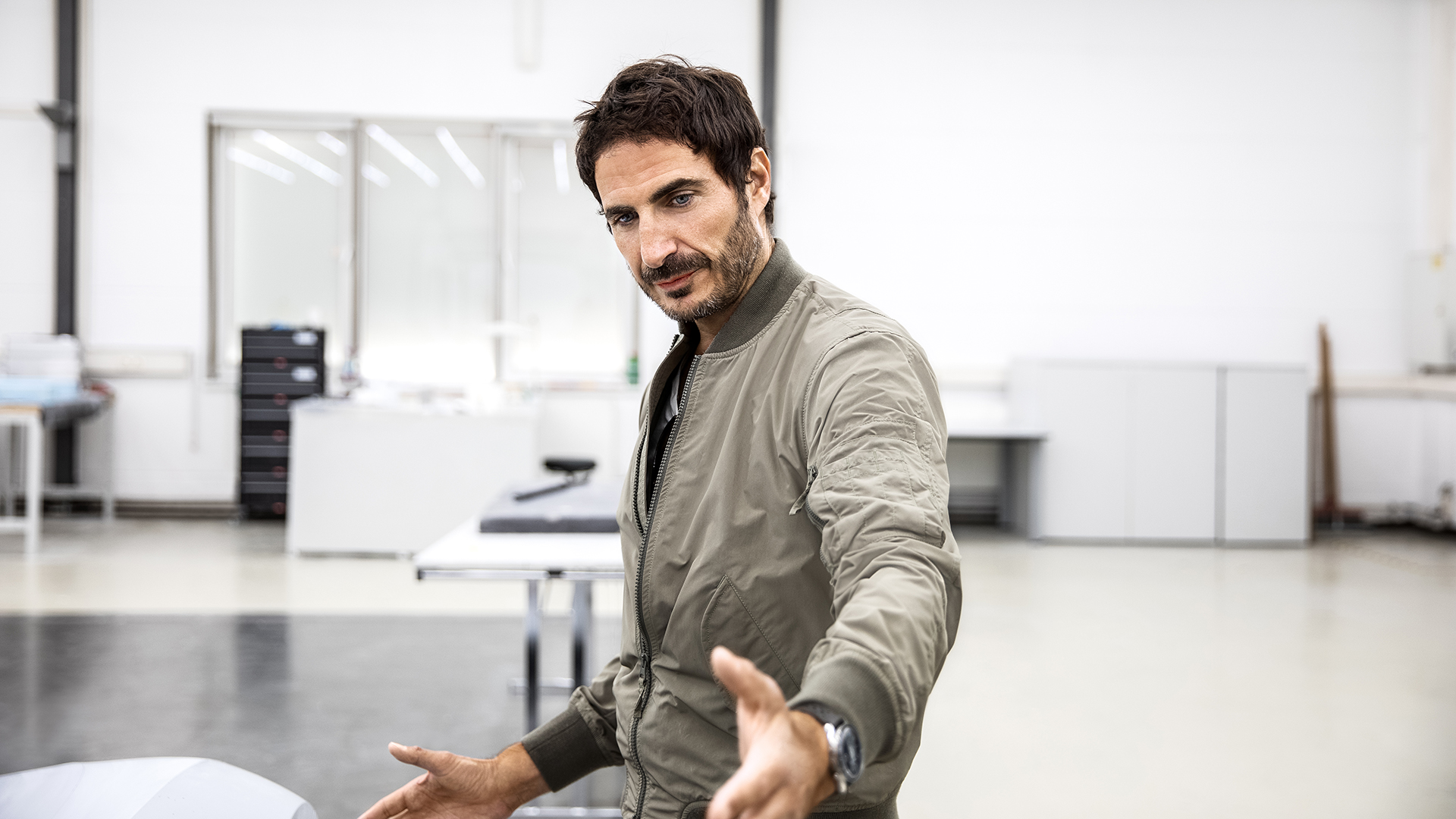
Gael Buzyn is Senior Director of the Audi Design Loft in Malibu, southern California.
Gael Buzyn is Senior Director of the Audi Design Loft in Malibu, southern California.
Gael, did you designed the new concept car completely digitally without any clay model?
Almost, that was the plan. But it is always good to see the car in volume before it goes into production. Having a clay model to check if the proportions are right is important. For instance, with the Audi skysphere concept, we felt it was looking a little bit too low-slung when evaluating the car in virtual reality (VR). Therefore, we decided to have the data quickly milled in clay in Ingolstadt so that Marc Lichte could have a look. He gave us his feedback and we added a little bit more room above the occupants’ heads to make it right. However, checking the proportions was the only thing we ever needed to do with that one clay model. There has been no work done by hand getting the lines right. The entire design development process was done digitally.
Is working virtually in the design process the logical evolution of design in our digitalised world today?
There’s no question that this is the way to go in the future. The gain in time and money is undeniable. The good thing, especially for a satellite studio like ours in Malibu, is that we can literally meet around a digital model with Marc Lichte, even though we are tens of thousands of miles away. That alone is one of the tremendous advantages of the digital process. We don’t need to have a model made here, in America, and have it sent to Ingolstadt for evaluation. Everything can happen instantaneously online.
Another advantage of digitalisation is that someone is continuously working on the project: We work during the Californian daytime, send the data over, it is then evaluated, presented or worked on during our night, which is daytime in Ingolstadt, and when we wake up, we have our answers or feedback. It’s the way to go: it compresses budget and time.
Please explain how the process of digital design works.
We typically start by sketching the old-fashioned way, but that part of the process is now extremely short. I would say a couple of days. We then transition right away to new digital tools that allow us to express our vision by sketching in 3D. After a few more days working with our talented 3D operators, we can put on our VR goggles and discuss volumes and proportions with Marc. What I like is that the young designers are totally natural when it comes to sketching in 3D. It’s great to see how they catch up with new tools and can express themselves with them right away.
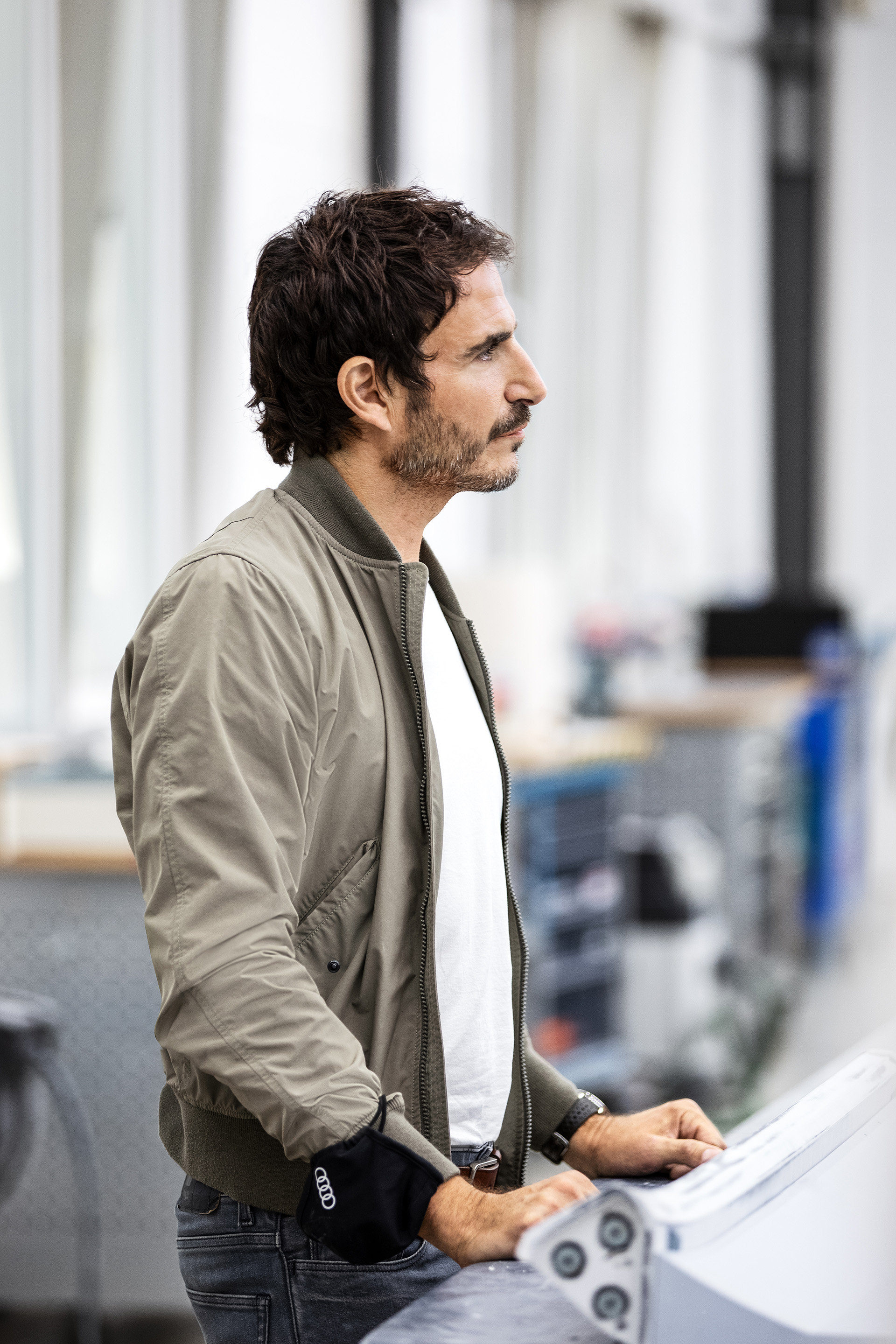
“The gain in time and money with the virtual design process is undeniable.”
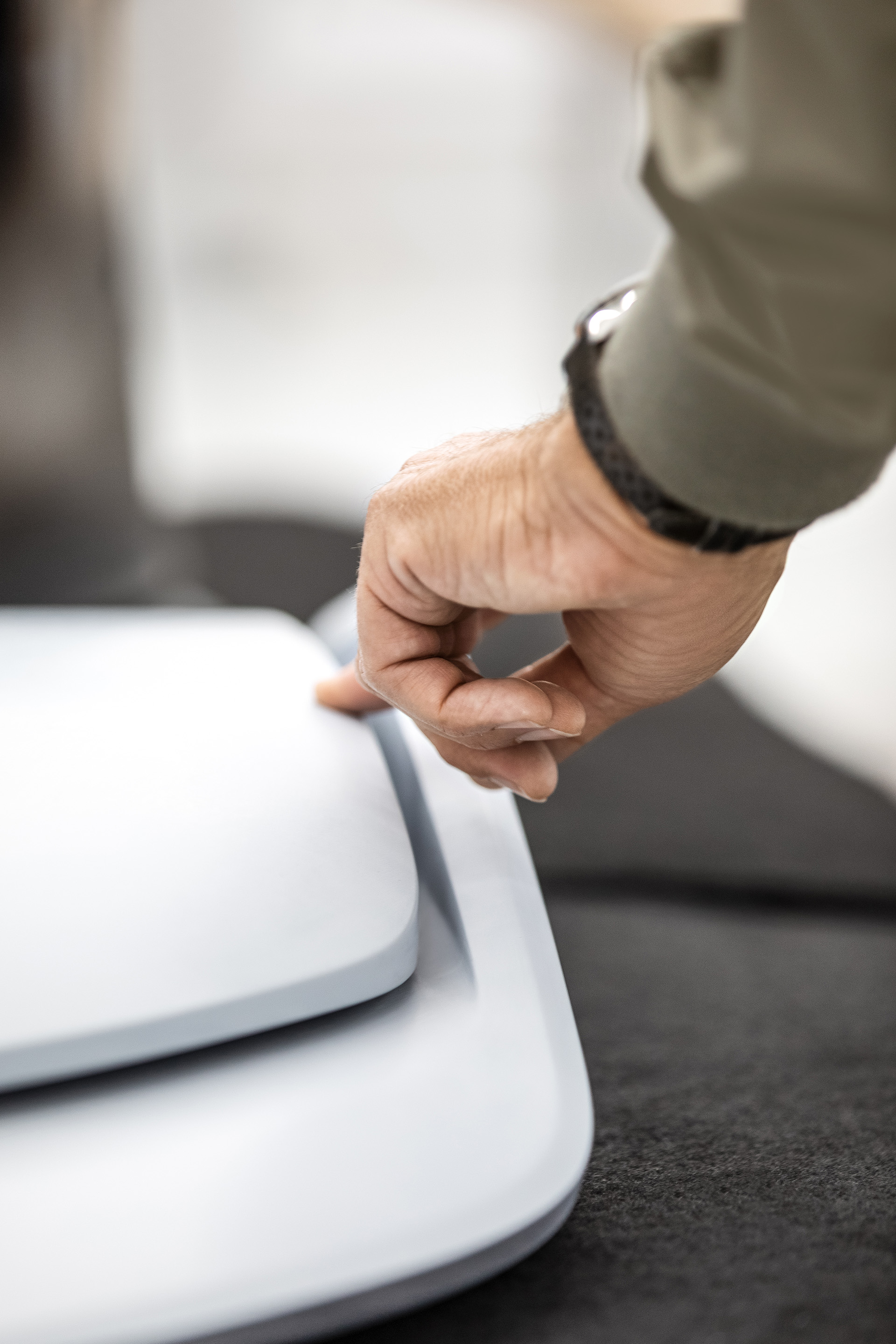
“For us, it’s still a magical one: when you finally see in reality what you’ve created.”
“The gain in time and money with the virtual design process is undeniable.”
“For us, it’s still a magical one: when you finally see in reality what you’ve created.”
“We haven’t lost the pleasure of sculpting a design.”
Gael Buzyn
What are the biggest differences in designing digitally compared to the traditional design process?
To say that there is no difference would be an exaggeration. There is something extremely artistic about modeling by hand; we always regard clay modelers as sculptors. You feel a little bit like an artist working with them on a clay model. Nevertheless, we are now in a new age and have found that working digitally can be artistic as well. As we get more and more skilled at creating digitally, the artistic feeling is starting to come back.
I personally thought I would lose that feeling by going digital, but I’ve realised that it’s still there, which is reassuring. We have lost having our fingernails filled with clay but we haven’t lost the pleasure of sculpting a design.
In Audi design, the focus is always on proportions. Do you have to change as a designer to judge proportions solely in VR?
That was definitely a learning curve and, quite frankly, a little bit challenging at the beginning. We had to take the plunge into the virtual world to judge proportions, which was completely new for us. And to add insult to injury, the early VR goggles had quite low definition. However, the tools got better, and we got better at using them. That’s probably the biggest step that needed to happen for us to make the switch to digital: learning how to use a new tool.
Is it important for a designer to be able to feel his design haptically?
Sure. At the end of the day, it’s a material property. It will be there, real in front of you, and nothing replaces seeing a design in person. That’s especially true for production projects, where designers and engineers argue over a few millimeters. I doubt we will ever be able to do without that final step of the design development process. For us, it’s still a magical one: when you finally see in reality what you’ve created.
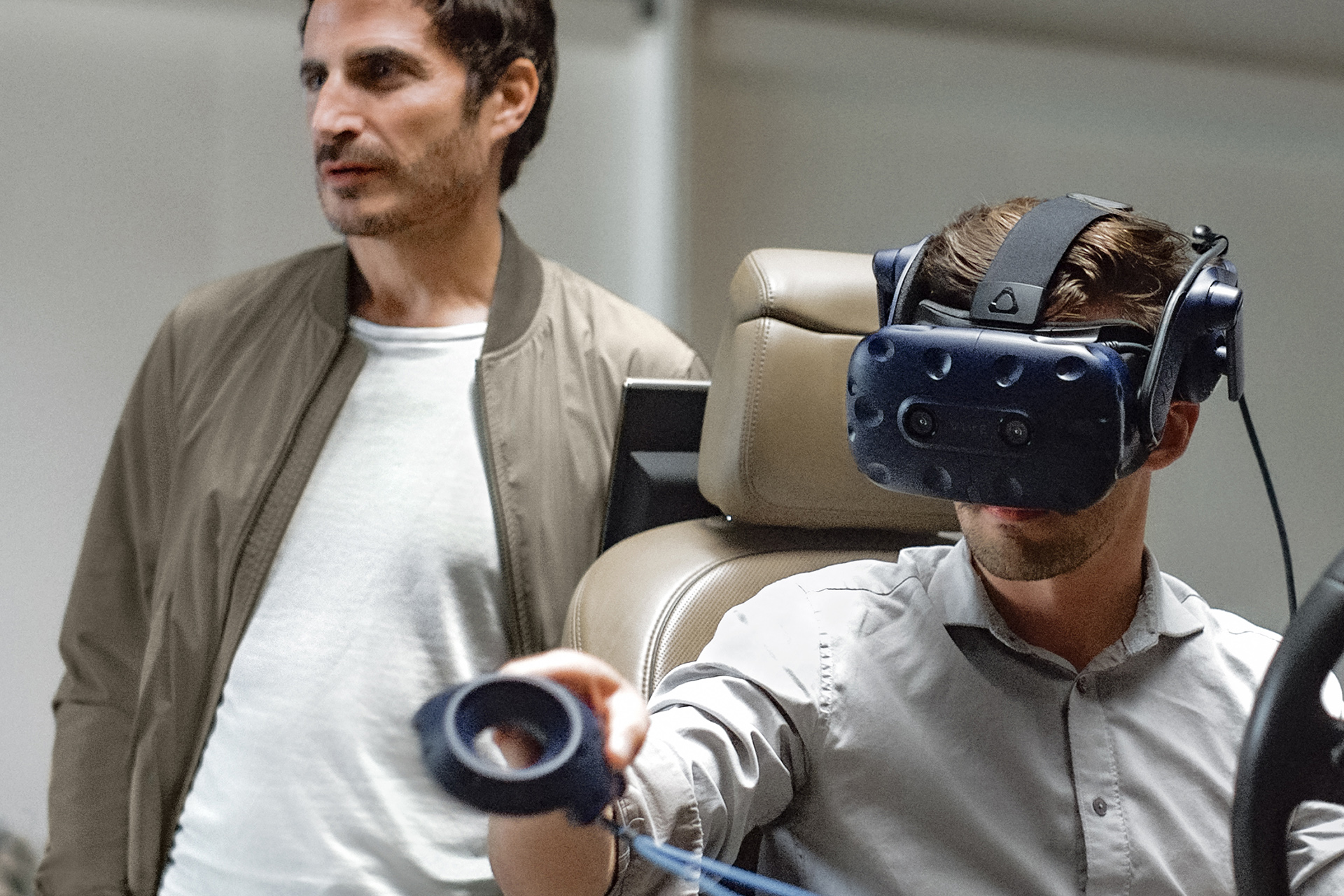
“Virtual design can project what kind of experience the vehicle will provide.”
Gael Buzyn
What challenges did you face in designing this concept car virtually?
Overall, it was pretty smooth. We only had a few minor issues. For example, we wanted an edge on the rear bumper of the Audi skysphere¹ to be quite visible. It appeared fine in VR but ended up a little washed out when the part was produced. This can happen, but it’s not a big issue. Again, we are still learning from this type of experience. Every time we create a new set of data, we can learn from those little mistakes and adjust our process accordingly.
Is designing a vehicle exclusively in digital only suitable for concept cars or also for production vehicles?
The digital process works for both. We spend more time on clay for production cars, because their development involves complex feasibility and mass production parameters that will inevitably affect the design surfaces. It is better to evaluate this part of the process on a model because the changes are subtle and numerous. But the digital process is pretty much the same, as are the advantages: a gain in time and money.
I remember that, in my earlier days as a designer, we had literally months of sketching before getting the chance to be selected to work on a full-scale model. Now it’s completely different. There are only a couple of weeks of sketching before a selection is made as to which design themes will be developed in computer-aided design (CAD). In turn, that step only takes a couple of weeks and by then you can already compare the different designs in VR 3D or have them milled full-scale in clay if needed. That’s the power of the digital process.
Does virtual design have advantages or disadvantages when you’re thinking about human-centric design?
A digital design process actually promotes human-centric design because, in a digital world, you can literally project what the experience will be like very early on. For example, you can place the car in its natural habitat, put materials onto the exterior and interior surfaces and project the digital interface onto the screens. This is easy and quite quick to do in the tube and, once it’s ready, you can experience the whole thing exactly as the end user - the customer - will.
When I was a younger designer at Volkswagen, we used to wrap full-scale interior clay models with real materials. Even the wood was painted by an artist who used to restore churches in Italy. It was a big job. Nowadays, designers will not present their design without materials, details, environments and lighting that create realistic reflections, etc. It’s unbelievable what they can achieve in a short time. This process was especially useful when developing the Audi skysphere¹, where it’s all about differentiating between two distinct experiences in one car. Working digitally helped us a lot in that instance.
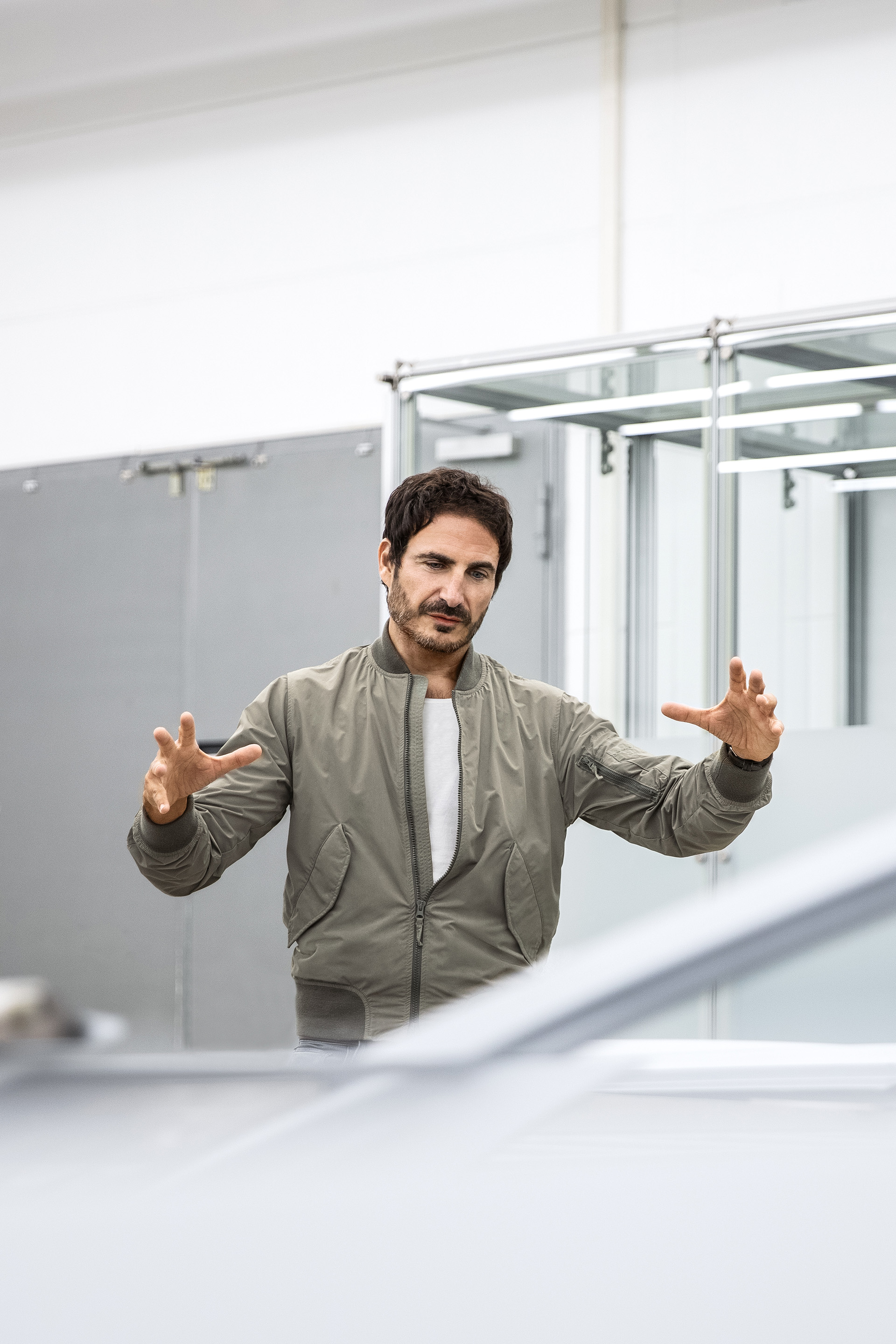
“Learning how to use a new tool was probably the biggest step when switching over to digital.”

“With the Audi skysphere, we have created something magical, beautiful and elegant: A sculpture in motion that offers two distinct experiences.”
“Learning how to use a new tool was probably the biggest step when switching over to digital.”
“With the Audi skysphere, we have created something magical, beautiful and elegant: A sculpture in motion that offers two distinct experiences.”
Is developing a concept car also an opportunity to explore new processes for production?
Of course. What we learn through the process of designing a concept car will feed into how we design production vehicles. The fact that we have only a very short amount of time to design a concept car pushes us to be creative even in the work process. We have to find new ways of working in order to be quicker and more efficient in the short time we have available.
The Audi skysphere was designed in three months and built in two. I never thought I would see this kind of timing in my lifetime. But now, with digitalisation, it is possible. It helps us design faster and also helps the engineers bring our vision to life in a shorter time. Typically you learn a lot through that process; there are many surprises and a lot of excitement along the way. It feels a bit like being a fashion designer preparing a show for a fashion week. His creations are unique pieces that will rarely be worn. However, there is so much being showcased; technique, style, trends and a future vision for the brand. For us at Audi, it’s no different. With the Audi skysphere concept, we have created something magical, beautiful and elegant: A sculpture in motion that offers two distinct experiences. The digital process was key to achieving something that extraordinary.
